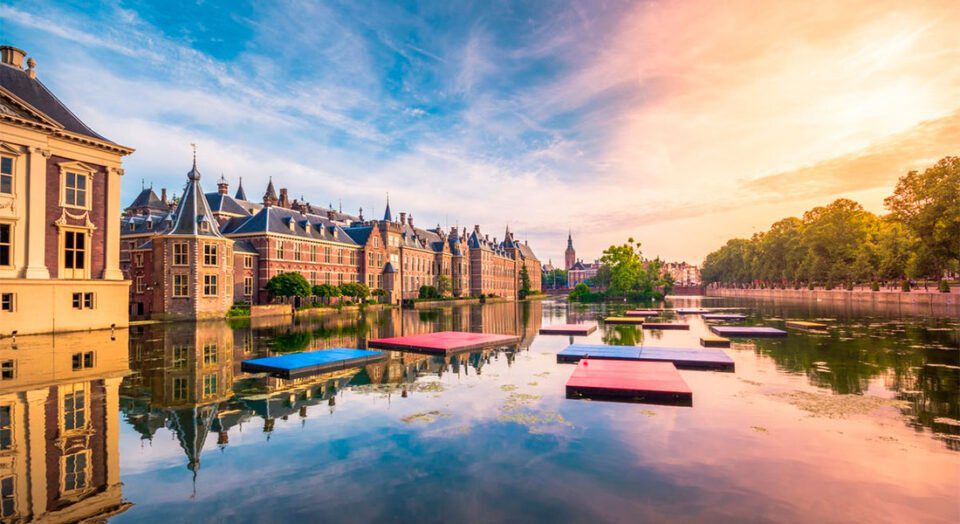The city of two royal residences, the seat of parliament, and the headquarters of the UN court boasts a unique charm. Traditions are honored here, and life moves at a steady pace. There is no ultra-modern art here; the main attractions of The Hague are majestic castles, landscaped parks, and preserved medieval buildings. Let’s explore where tourists should go and what to see first, and help plan an optimal walking route through this amazing city.
Peace Palace
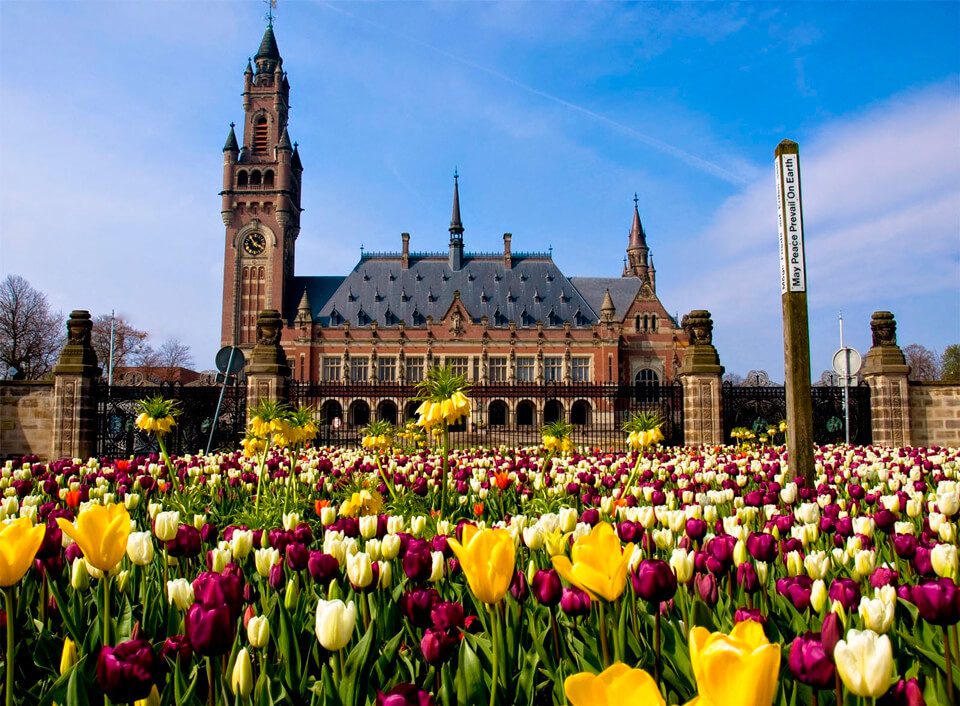
In the center of The Hague, amidst a park, stands the Peace Palace, the official residence of the International Court of Justice. The red brick and white sandstone building, combining Gothic, Romanesque, and Byzantine styles, is a replica of the 17th-century Town Hall in Calais. It was built according to the adapted design of French architect Cordonnier, whose sketch won a competition among 216 other works, funded by American philanthropist Carnegie. The palace is adorned with two towers, one of which features a clock and a carillon with 48 bells.
The palace’s interior, which includes the best of world countries, is impressive. Here you find Italian marble, Scandinavian wood, Chinese and Hungarian vases, American statues, Turkish and Persian carpets, and Japanese tapestries. The palace grounds feature a landscaped garden by Thomas Mawson, with a fountain in front. Visits to the palace and garden are possible only as part of a group for €9.5 several times a year on weekends. At other times, tourists can enjoy a free audio guide and video tour at the Visitor Center, open from 10:00 to 17:00 daily, except Mondays.
Knight’s Hall
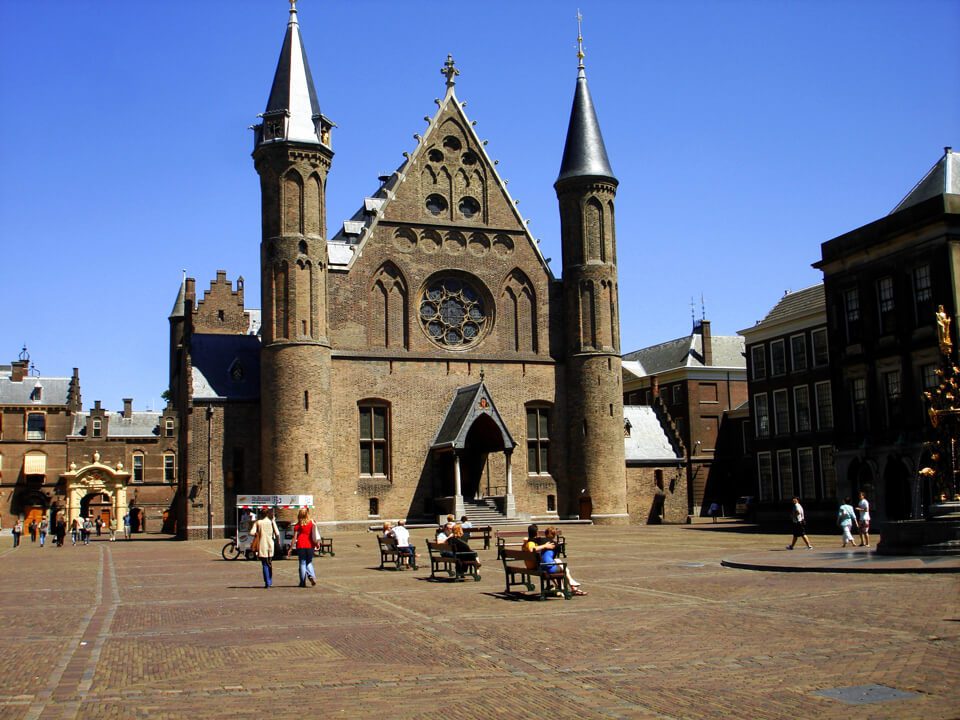
Knight’s Hall is located in the center of the Binnenhof palace complex, forming part of it. Built in the 13th century, the building is still used for ceremonial events. Previously, these were celebrations; now, it hosts monarch speeches and royal receptions. The structure is a pointed pentagon flanked by towers. The walls are 1.5 meters thick. The facade is decorated with a round stained-glass window depicting the coats of arms of ruling monarchies.
The hall’s interior is also interesting. There are no usual columns or other structures supporting the roof. The large 18-meter span is held by a wooden beam frame, resembling an inverted ship’s hull. Inside, there is a throne and flags of the 12 provinces. Unique building tours are available only during group excursions.
Binnenhof Castle
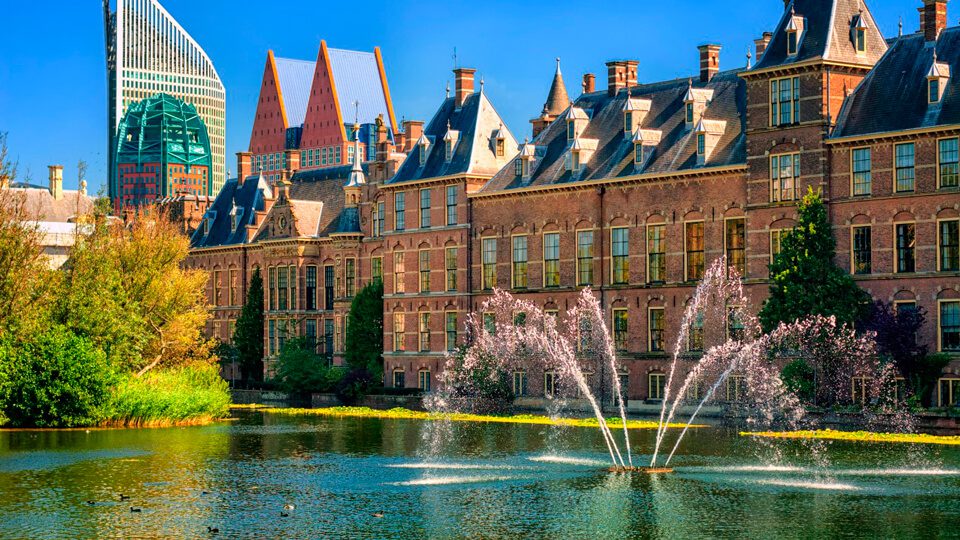
Binnenhof Castle is a majestic architectural complex in the heart of The Hague. Originating from a count’s hunting lodge, it is now the political center of the country, housing the parliament and government. The complex consists of many buildings. The most interesting are the Knight’s Hall (where the parliament met before moving) and the Torentje tower, home to the Prime Minister’s office. Additionally, Binnenhof includes buildings of two chambers and a new parliament building.
The inner courtyard can be accessed through the Grenadiers and Regents gates. Here, the eyes are drawn to a wrought golden fountain and a small church with turrets. The palace complex is surrounded on three sides by a magnificent park, perfect for walks and views. The fourth side faces the Hofvijver pond, as seen in tourist photos.
Louwman Museum
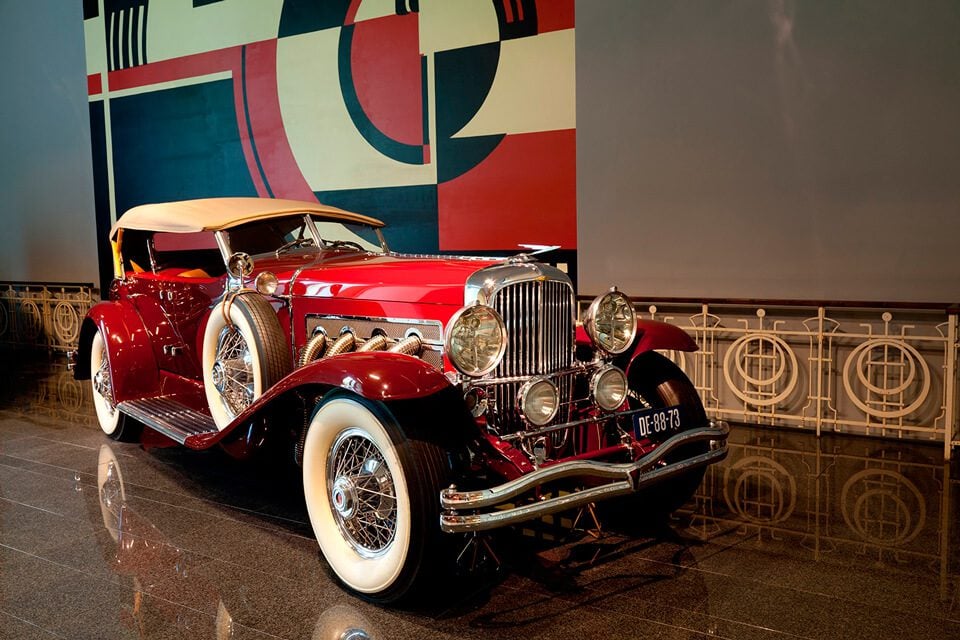
Even non-car enthusiasts will find the Louwman Museum interesting. It houses the world’s oldest private collection, with the first car acquired in 1934. Two generations of Louwmans collected cars, now exceeding 250 in number. The exhibition includes both antique and modern models. The museum moved several times, lastly to The Hague in 2010, where it occupies a purpose-built building.
On 10,000 square meters, visitors can see unique cars like the Eysink, the Bickers steam car, classic Spykers, Winston Churchill’s Aston Martin, the rare Edsel-Pacer, the Amphicar amphibian, and many others. The museum has a restaurant and a shop selling books, posters, and Millers Oil products. It is open daily except Mondays from 10:00 to 17:00.
Madurodam Miniature Park
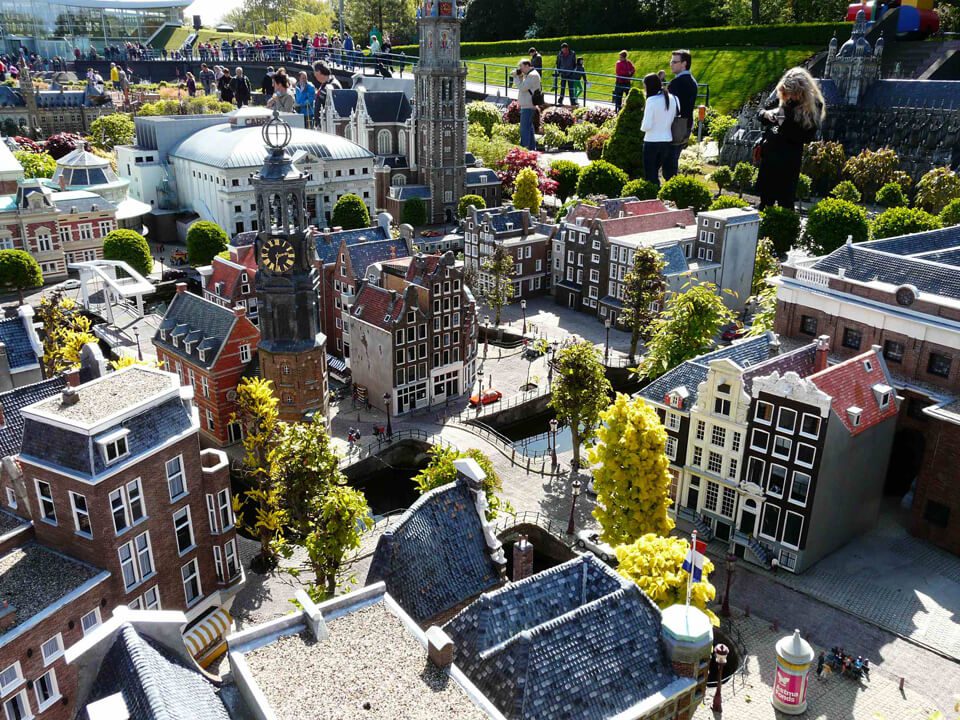
Madurodam Miniature Park represents a typical Dutch city. It is not a replica of a specific city but a collective image, featuring views of Amsterdam, The Hague, Kinderdijk, Utrecht, and Rotterdam. The park was created to support a sanatorium for students with tuberculosis, allowing them to continue their education during treatment. The Madurodam family made the first contribution, hence the project’s name.
The project was grand. Opened in 1952, the park has been continuously improved, undergoing renovation in 2011. The exhibits are scaled at 1:25. The park is divided into several themed zones. One of them, “Grand Cities,” introduces famous buildings like the Westerkerk Church, Anne Frank Museum, Royal Palace, Tower House, etc. The park’s interactivity is its highlight. Visitors can control figures, cars, trains, planes, and even play out entire scenes.
Madurodam is open from 8:00 to 20:00 daily.
Mauritshuis Royal Gallery
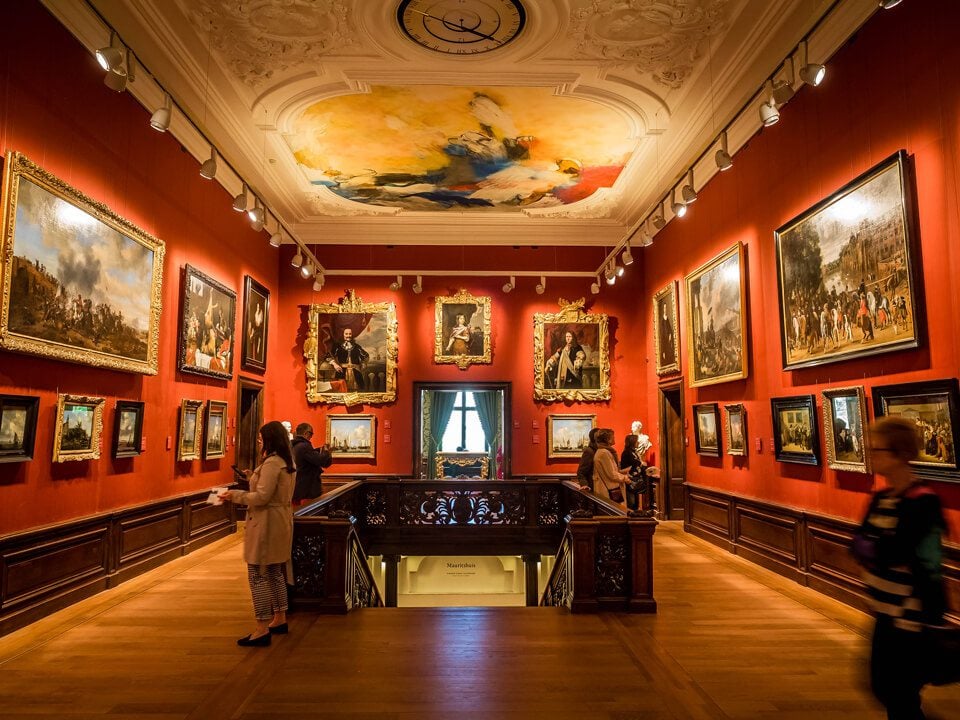
In the very center near the Binnenhof, in the mansion of the famous architect Jacob van Campen, is the Mauritshuis Royal Gallery. Opened in 1822, it is one of the most famous galleries in the Netherlands. In 16 halls of the historic building is a relatively small collection of 250 works by Dutch Golden Age painters. Additionally, the gallery includes paintings from other periods, miniatures, sculptures, drawings, etc. The halls themselves are also interesting due to their historical interiors, with painted ceilings, silk-covered walls, and elegant chandeliers.
The gallery’s collection features works by Rembrandt, Vermeer, Potter, Steen, Fabritius, Hals, and others. The gallery is connected by an underground passage to the Royal Wing, housing workshops, a library, and several rooms available for rent. The museum has a brasserie and a souvenir shop. The gallery is open from 10:00 to 18:00, Monday from 13:00 to 18:00.
Escher Museum
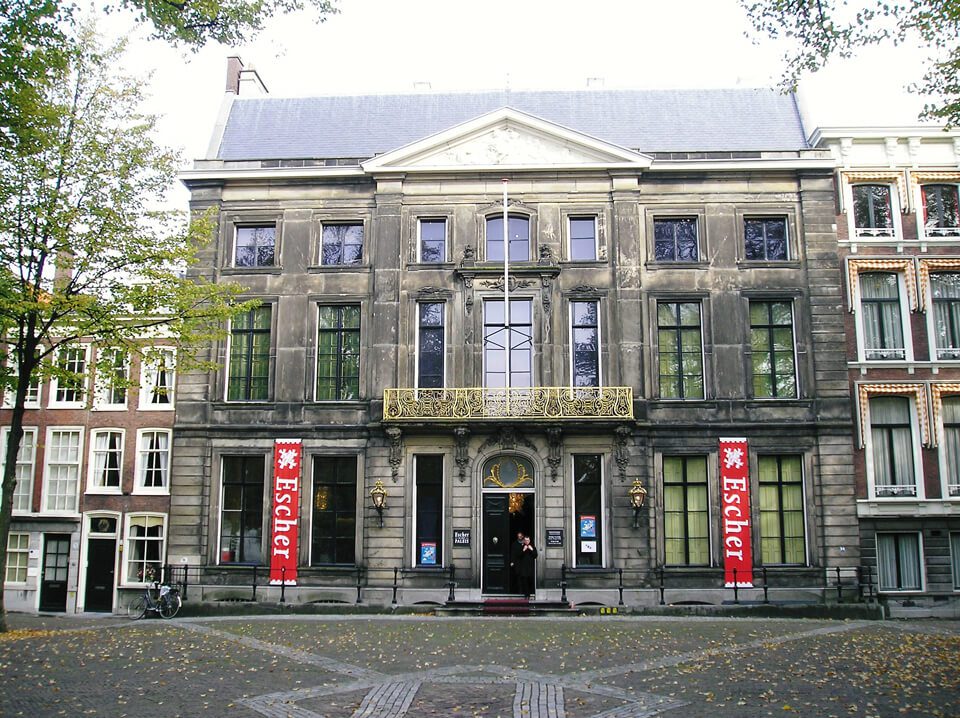
The Escher Museum is the best opportunity to get acquainted with the work of one of the best graphic artists of the 20th century, Maurits Escher. The museum opened in 2002 in the Lange Voorhout Palace, previously used by royal dynasties as a winter residence and office. Some rooms still retain their historical interiors. The palace’s notable features include chandeliers by famous sculptor Hans van Bentem and parquet by Judd.
The permanent exhibition includes lithographs, prints, and carved wooden items. Early works by the Dutch artist are displayed on the first floor, ranging from landscapes to graphics. The second floor showcases later works, including world-famous masterpieces: “Belvedere,” “Air and Water,” “Waterfall,” and more. The third floor houses the world of optical illusions, where visitors love to take photos. The building has a souvenir shop and a café in the former kitchen of Queen Emma.
Scheveningen Pier

In the Scheveningen district, considered the best resort in the Netherlands, stands the pier of the same name. This is the second pier built here; the first, constructed in 1901, was destroyed during World War II as it was used by the Germans for ammunition storage. In 1959, construction of the 380-meter modern pier began, a favorite among tourists and locals. It features two levels: a glass-enclosed lower gallery and an open upper deck. The pier serves as a promenade, viewing platform, and a shopping and entertainment space.
Shops, cafes, bars, restaurants, and even a casino are located on the pier. For fitness enthusiasts, personal training sessions are available in a modern gym or relaxation in seawater pools. For entertainment, the pier offers a Ferris wheel with air-conditioned cabins for scenic views. Adrenaline seekers can head to the 65-meter tower for a bungee jump.
Noordeinde Palace
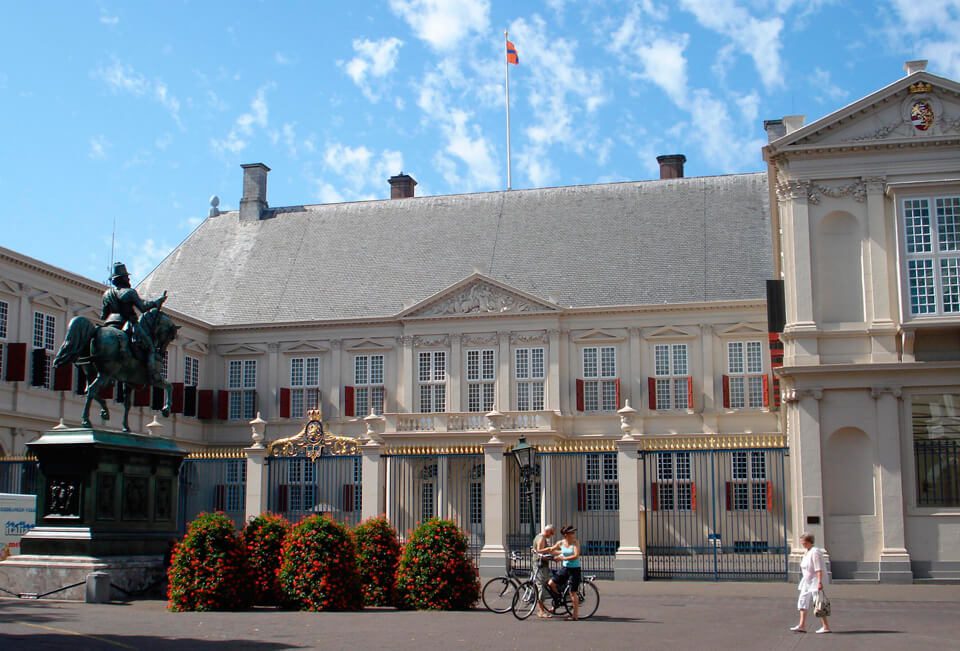
One of the four official residences of the royal family, Noordeinde Palace, is located in the city center on a shopping street. Built as a farmhouse, Noordeinde is modest, with its original stone masonry still intact in the basement. The palace’s history is tied to Frederick Henry, grandson of William of Orange, who ordered its expansion and reconstruction in 1609. Over the centuries, it changed hands until it became state property and the official winter residence of the royal family in 1813.
Some liked it; some did not. Some were born here, others never lived a day in it. In 1984, Noordeinde was designated the royal office, a status it retains to this day. Since 2013, King Willem-Alexander has worked here. Due to the building’s small size and the monarch’s busy schedule, the palace remains closed for public visits, except for a few weeks in summer when it opens for tours.
Huis ten Bosch Palace
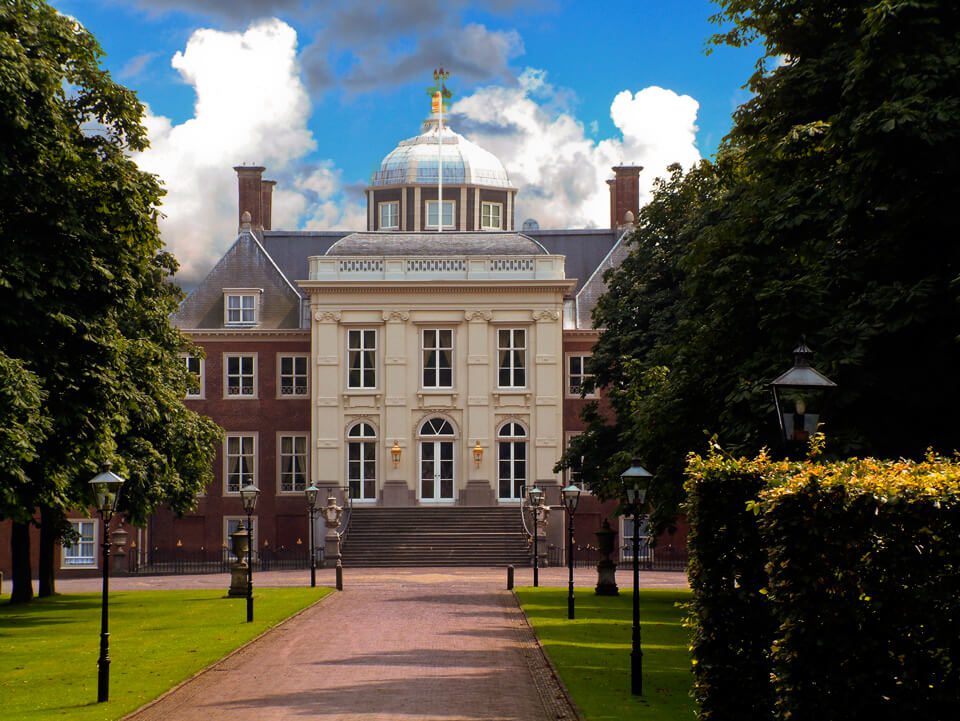
In the luxurious Haagse Bos park lies another official residence of the royal dynasty. Unlike the ordinary Noordeinde, Huis ten Bosch Palace impresses with its grandeur. From the building to the landscape design, it resembles Peterhof or the Château de Maisons-Laffitte. Designed by renowned architects Post and Campen in the mid-17th century, the palace was intended for Frederick Henry and became a monument to his memory after his death. The famous Hall of Fame, decorated by artists like Honthorst, Bosschaert, Lievens, and Van Dyck, is a testament to this.
The palace was expanded and rebuilt. World War II nearly destroyed the stunning complex. Post-war reconstruction was completed only in 1981. The “House in the Woods,” as the palace complex is translated, was chosen by many monarchs as a residence, so it remains closed to visitors.
Old Town Hall
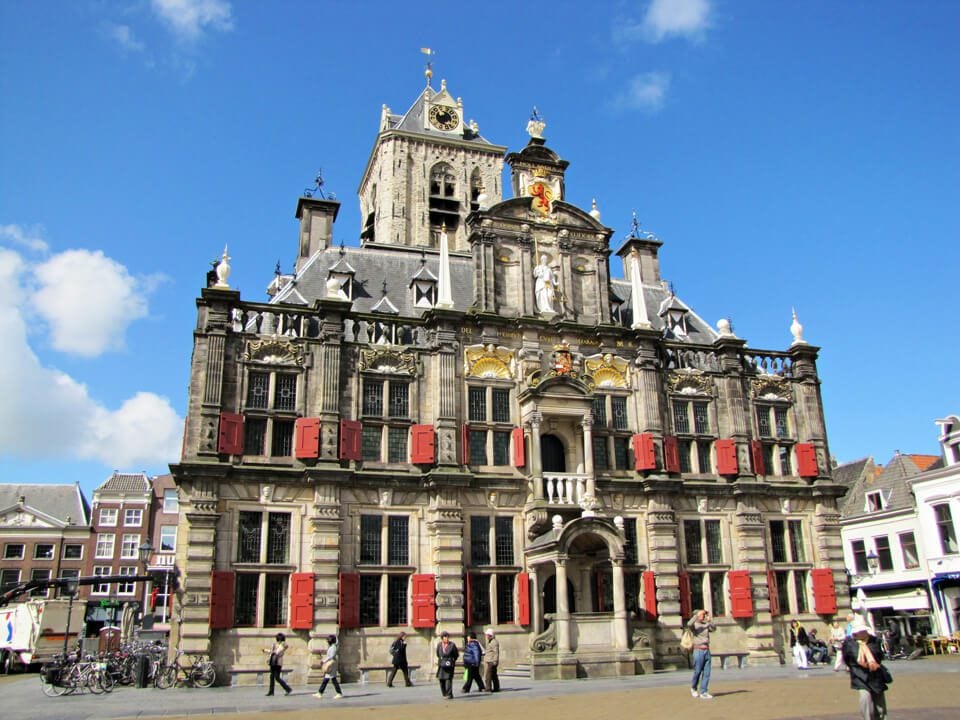
The “Ice Palace,” as locals call the Old Town Hall for its color, no longer serves as the city hall, which moved to the New Town Hall. However, marriages can still be registered here, and members of the monarchy register the birth of children. Built in the 16th century, the structure consists of several buildings added over time. Its charm is enhanced by the octagonal tower, which survived from the count’s castle that once stood here, topped with a belfry whose bells chime four times a day. The facade of the oldest part of the Town Hall is adorned with statues symbolizing justice, strength, hope, love, and faith.
This part of the building is used by the municipality. The second building, which housed the chamber of elders, hosts court sessions. Despite wars and Protestant revolutions, the building, constructed on the site of fortress walls, retains old stained glass windows, paintings, and 17th-century frescoes. The basements house an atmospheric restaurant.
Mesdag Panorama
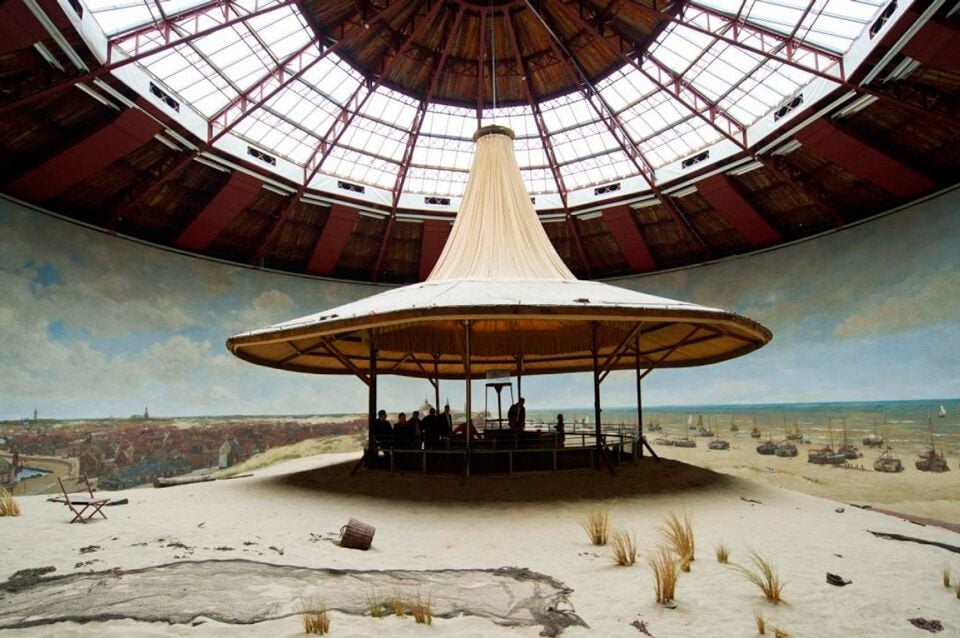
The Mesdag Panorama is called a museum of one masterpiece. The main exhibit is a 120-meter-long, 4-meter-high canvas offering a 360-degree view of the North Sea, dunes, and the village of Scheveningen as it was in the late 19th century. Visitors can admire the scene from a small pavilion 14 meters from the panorama. This space is filled with sand, fishing nets, and dried grass. The illusion of presence is maintained by a gentle breeze and the sounds of the sea and seagulls from speakers.
The canvas is not static; it changes depending on the weather. This is not magic but a clever museum setup, with a glass dome over the panoramic painting instead of a regular roof, altering the colors based on lighting. Besides the Mesdag Panorama, which took the artist and his assistants four months to complete, the museum houses other works by the marine artist.
Museon
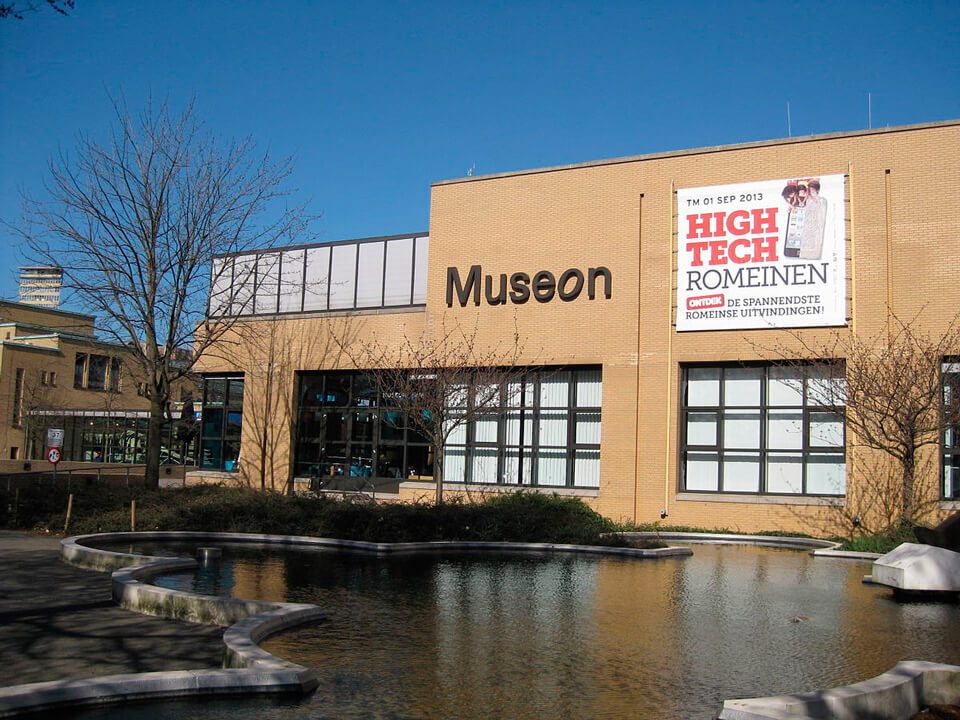
Museon is an interactive science and culture museum designed to highlight the relationship between humans and nature. Established in 1904 as a “school museum,” its exhibits were meant to illustrate school knowledge. The first director-geologist laid the foundation of the collection. Donations quickly expanded the museum’s collection, covering geology, biology, history, ethnology, and archaeology.
A unique acquisition was a gift from a famous biologist, presenting household items of Greenland Eskimos. The collection now exceeds 270,000 exhibits, including animal specimens, dinosaur bones, tools, and national costumes from around the world. Visitors are allowed not only to view but also to play out scenes using the exhibits.
Prison Gate Museum
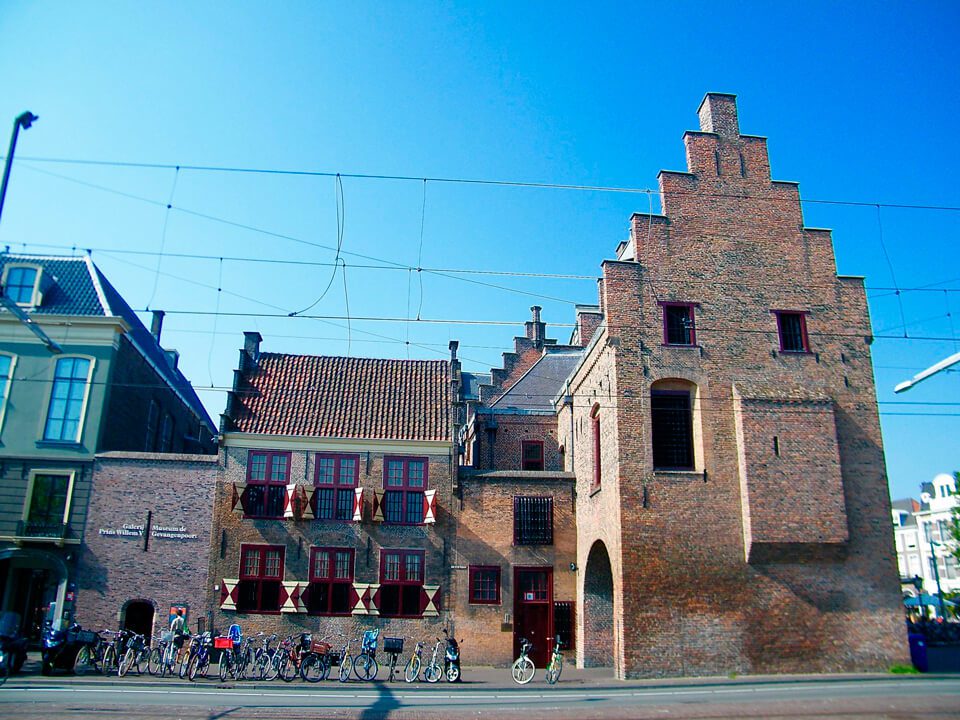
The Prison Gate, also known as the Prisoners’ Gate, Torture Museum, or The Hague Lubyanka, is housed in the former main entrance gate to the Binnenhof castle. Built in the 13th century, it became a debtors’ prison after 200 years. Another century later, there were not enough cells, so a courthouse and additional casemates were added. Notable prisoners included politician Cornelis de Witt, described in a novel by A. Dumas, and scientist Dirk Coornhert.
After 400 years of use as a prison, the building became a museum. Here you can learn about prisoners’ lives, the nobility’s privileges, and the conditions for the poor. Exhibits describe punishments and tortures, with the largest collection of such instruments in the Netherlands. The museum is open from 10:00 to 17:00 on weekdays except Mondays, and from 12:00 to 17:00 on weekends.
Westbroek Park
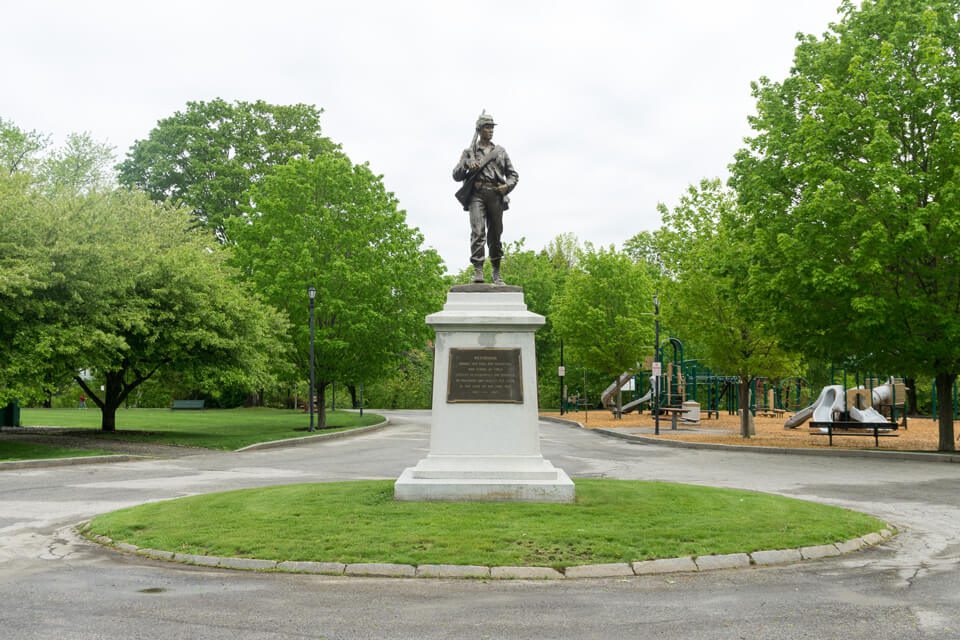
One of the most beautiful parks, Westbroek is located in Scheveningen, near the beach. Designed by P. Westbroek in 1920, the park offers various recreation areas. There are bright playgrounds for children, football fields for youth, and shady alleys for walks. In the park’s center is a lake where you can rent boats. For those hungry, there is a restaurant and a tea room. The restaurant offers quick snacks with Eastern cuisine, while romantics choose the tea room for a light lunch amidst trees and flowers.
The park’s true treasure is its rose garden, famous worldwide. Florists from around the world visit for research. The park’s collection comprises about 20,000 rose bushes of 300 varieties. From early July to late October, the rose garden blooms in all colors and fragrances.
Grand Hotel Amrath Kurhaus
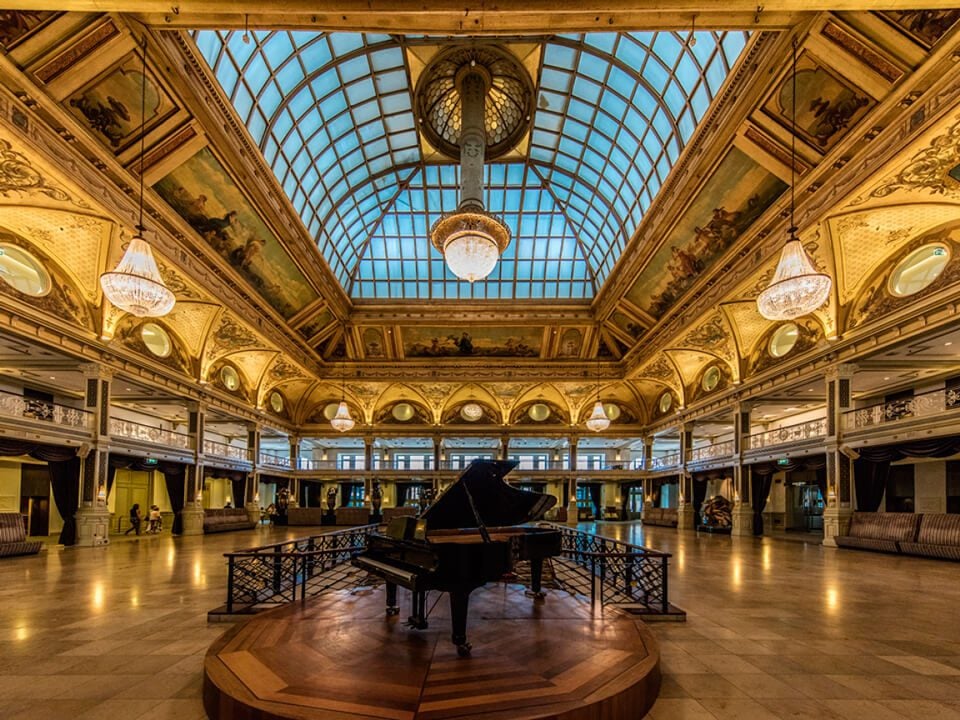
In Scheveningen, right on the North Sea coast, stands Grand Hotel Amrath Kurhaus. Its grandeur makes it resemble a palace. Built in 1885, the hotel initially housed a concert hall, hosting many celebrities and even royalty. Notable guests included Luciano Pavarotti, Julio Iglesias, pianists Claudio Arrau and Little Richard, singer La Toya Jackson, Donna Summers, the Disney brothers, and Helmut Kohl. The hotel’s conference halls hosted summits and international organization meetings.
In 1969, the Kurhaus was closed, and plans to demolish it were made, but it was listed as a historic building. The hotel reopened in 1979. Today, it houses the Kurzaal, serving as a gallery with changing exhibitions and a hall for events, parties, and chamber concerts. Additionally, the hotel features a branch of the Bell’Arte gallery, with exhibits on open terraces, foyers, and corridors.
UN Prison
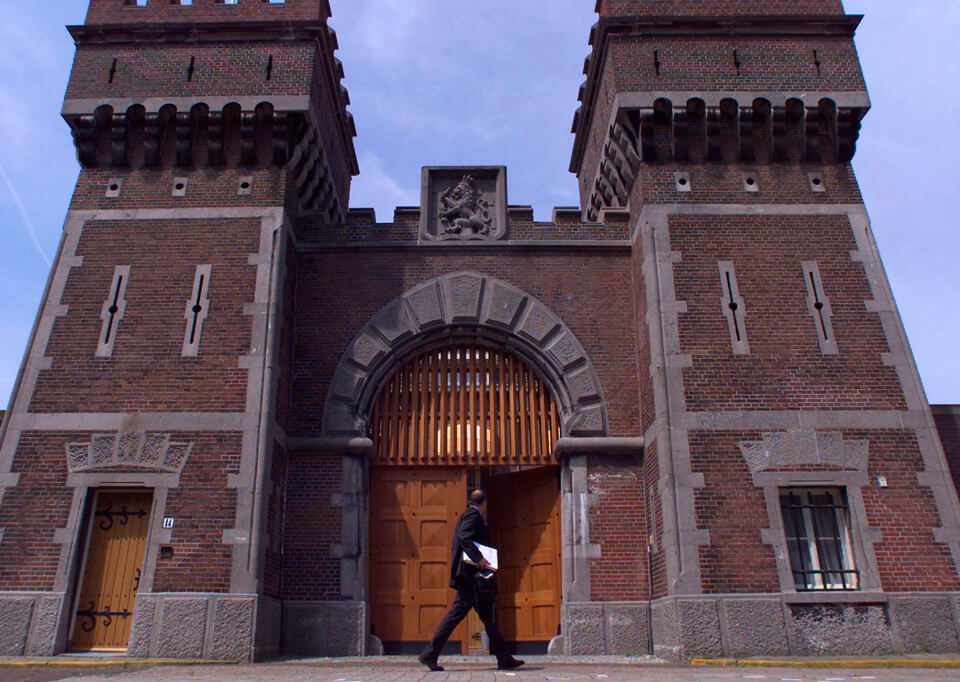
In 1994, the UN prison was established in the Scheveningen district, part of the International Tribunal for Yugoslavia. The prison, designed for 84 inmates, now holds only 51. The International Red Cross monitors the prison conditions. Inmates are allowed to move freely within part of the prison, buy food, cook (despite three meals provided), watch TV, talk on the phone, exercise, and walk in the courtyard. They can even use computers to prepare their defense or review case documents. Astonishingly, the prison is located among regular residential houses. While it’s unlikely you can enter, you can view it from the outside, walking around its perimeter.

